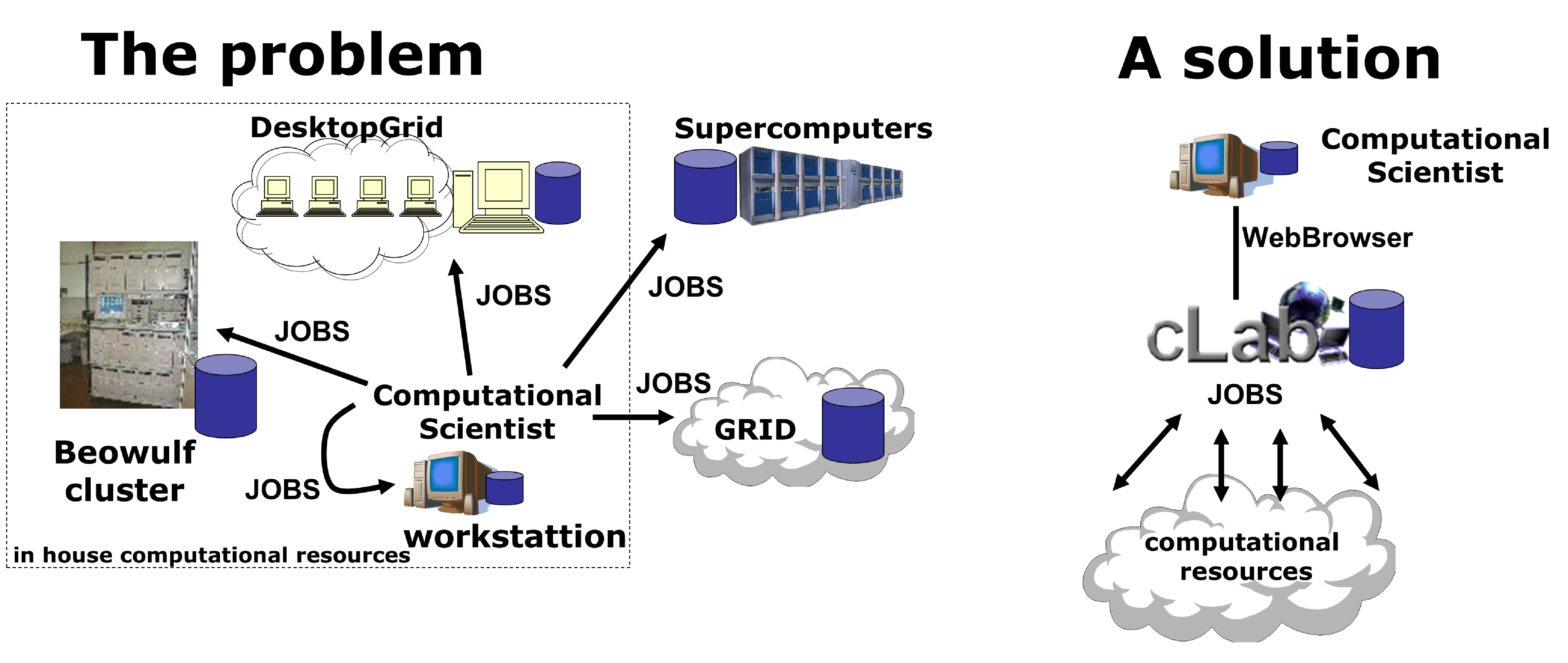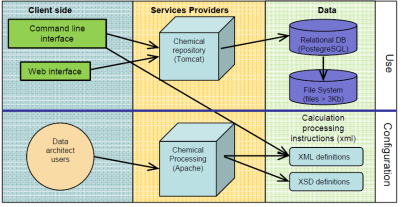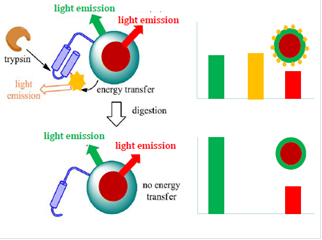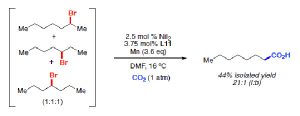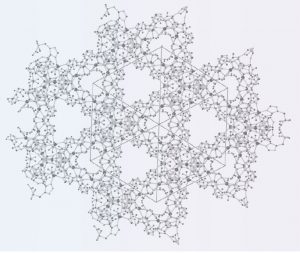Patents
The following table summarizes the technologies and results of research that were protected by intellectual or industrial property rights, the situation of each of the intangible assets as well as most relevant technology transfer and valorization activities.
cLab: a web portal to access, use and manage computational resources
The Computational Laboratory Web Manager (cLab) is a web portal that permits the access and the management of a computational laboratory, which is a high performance hypercomputation center based on heterogeneous clusters of computers and used by multiple users simultaneously for the execution of computational jobs. cLab is an internet based application that allows users to manipulate files and folders, prepare computational tasks, submit and control them while they are running, as well as visualize or store results. cLab therefore provide tools for the users as well as for the system administrator.
Purification of fullerenes by selective encapsulation mediated solid‐liquid extraction
A concave compound self assembles thanks to reversible and controllable hydrogen bonding to form a dynamic capsule able to selectively extract fullerene derivatives of given size and shape. The process for the separation of fullerene derivatives is based on a sequential selective encapsulation in an appropriate solvent system of the fullerenes contained in a mixture. The capsule is formed by reversible self‐assembly of two concave fragments. The encapsulation of the fullerene derivative having the best fitting geometry for the cavity of the capsule is fast and selective.
- Fast and simple purification process (requires only 2 filtrations)
- Capsule is recyclable • Fullerenes and their derivatives are high value chemicals
- No specific equipment required
- Economically and environmentally sustainable process
- Capsule opening is dynamic and easily controlled (fast controllable extraction)
- Possibility to purify functionalized fullerenes from unfunctionalized ones
- Possibility to purify endofullerenes
Process to obtain a trifluoromethylating composition
A process for the direct cupration of fluoroform has been developed. This exceedingly simple process employs only cheap reagents and is advantageously run at room temperature to produce CuCF3 reagents that are useful in trifluoromethylation reactions. Chemical compounds bearing a trifluoromethyl group are widely used in the production of various pharmaceuticals and agrochemicals as well as specialty materials, polymers, composites, building blocks, and intermediates for various needs. Fluoroform, CF3H, is an ideal source of CF3 because it is inexpensive, readily available in large industrial quantities, non‐toxic, and not an ozone depleter.
- clean production of trifluoromethyl reagents
- process works at room temperature and atmospheric pressure
- valorization of fluoroform (industrial waste)
- inexpensive and abundant trifluoromethyl source
- low‐cost reagents
The technology has been the object of a R&D collaboration between ICIQ and a global company of the crop protection sector, with the aim of finding new synthetic applications of industrial relevance for the developed trifluoromethylating agent.
Process for the preparation of methanol and methanol-derived products from carbon oxides
Chemical reduction of carbon dioxide to methanol and its derivatives (such as DME) is considered one of the key technologies to reduce both global warming and fossil fuels dependency. Unlike the currently used process for methanol synthesis, ICIQ’s process provides excellent conversions and selectivity to methanol in one pass through the reactor, thereby providing the highest time yield observed for the chemical reduction of CO2.
- High per-pass conversion
- High selectivity to methanol
- Use of conventional/commercial catalysts
- From CO2 to DME in one sole reactor
- Small reactor size
This technology has been the object of negotiations and scheduling of a joint development project associated to a progressive technology transfer scheme with a global petrochemical company. In spite of successful early negotiations, the company finally decided to retract. Plans for the creation of a spin-off company are currently being elaborated.
SCIPIO: a comprehensive software interface for computational chemists
SCIPIO is a software that allows to handle, store and manipulate output files from computational chemistry experiments. SCIPIO is a general data extractor and manager that is here presented as a Computational Chemistry Results Repository, which is a sort of tailored electronic notebook allowing for substructure searches and for the generation of “ready to publish” reports
- Web and Command Line (bash) interface.
- Visualization of chemical structures
- General search & Substructure search
- Automatic generation of “Supporting Information” PDF files for direct publication.
- Calculation and Plotting of “Reaction Energy Profiles” by combining multiple results
Ratiometric assay for the quantification of hydrolytic enzymes
A nanoparticle containing two different populations of chromophores and funcionalized with a dye-labelled peptide sensitive to the action of a hydrolytic enzyme has been developed. In that way, the optical response of the system can directly be correlated, in a quantitative manner, to the activity of a specific enzyme found in the medium where the nanoparticle is placed, thereby allowing for enzyme quantification. This technology was applied to cystic fibrosis, through the analysis of the trypsin amount of faeces samples. It was shown that this system could allow for the determination of patient’s phenotype, thus avoiding genetic testing.
- non-invasive diagnostic method
- accurate quantification of enzymatic activity
- method can be applied at point-of-care
- fast sample analysis
- Patient phenotype towards cystic fibrosis can be assessed
- Diagnostic platform is versatile
This technology has been further developed within a project of clinical validation of the diagnosis method funded by Fundació La Caixa. The cystic fibrosis application is currently the object of clinical trials in collaboration with Parc Taulí hospital in the framework of an ERC Proof of Concept project.
Resistive sensor for the quantification of benzene in the gas phase
Benzene is a volatile and toxic organic compound with strong regulations with respect to exposure. The developed sensor is highly sensitive and selective to benzene, and is based on a specific molecular receptor linked to a carbon nanotube through gold nanoparticles. Benzene recognition by the receptor provokes a bending of the nanotube, which affects the resistivity of the system.
- short response time
- highly sensitive (low levels of detection)
- wearable technology
- no latency between two consecutive measurements.
This technology has been developed in joint collaboration with the Rovira I Virgili University. A prototype is being developed by the group of E. Llobet at URV and discussions are ongoing with a catalan company for technology licensing and joint development.
Cobalt based catalyst for hydrogen generation from water in PEM cells
A new catalyst based on nanoparticles of cobalt oxide and carbon black has been developed for the generation of hydrogen from water in Polymer Electrolyte Membrane cells. Under high applied potentials (i.e. 2-3 V), the catalyst allows reaching a productivity of hydrogen similar or superior to that obtained using conventional platinum based expensive catalysts.
- cheap and robust catalyst
- catalyst is highly efficient (Pt like efficiency)
Potentiometric sensor for the quantification of creatinine in biological samples
A potentiometric sensor based on a calix[4]pyrrole receptor specific for creatinine recognition has been developed. The sensor is highly sensitive to creatinine, a biomarker relevant to muscle operation and kidney function. Creatinine quantification in urine samples correlates well with state of the art enzymatic methods (Jaffé).
- short response time
- highly sensitive (low levels of detection)
- wearable technology
- point of care device or potential use in telemedecine
This technology has been developed in joint collaboration with the Rovira I Virgili University. The URV team is participating to the first edition of the “Caixa Impulse” program and is willing to create a new company for technology development and commercial exploitation.
Analogs of (-)-Englerin A for the treatment of cancer, diabetes and HIV
New unsaturated analogs of (-)-Englerin A, a natural product highly active for the treatment of renal cancer, have been developed and found to be more active against certain types of cancers than the natural product itself.
- compounds are highly selective for determined types of cancer cells, potentially reducing undesired side effects
- this new family of compounds completes a family of existing drug candidates
This technology has been developed in joint collaboration with the National Cancer Institute (NIH, USA). The technology has been exclusively licensed to NIH for commercial exploitation and licensing to third parties.
Photocalyzed, metal-free synthesis of pyrrolidine compounds
A new method for the synthesis of pyrrolidine compounds and other heterocycles have been developed. The method involves the use of catalytic amounts of iodine and an oxidant under light irradiation, the substrate of the reaction being a butylamine derivative, which undergoes intramolecular cyclization under the conditions of the reaction.
- method is metal free and allows an easier product purification
- Regulatory approval friendly impurity profile
- Mild conditions and broad tolerance to the presence of functional groups on the substrate
Co-polymerized fluorinated proline derivative as immobilized organocatalyst
A new polymer-bound catalyst based on a fluorinated proline derivative for nitroaldol reactions has been developed. The catalyst is prepared by co-polymerzation and is highly active, robust and recyclable, while offering a high chiral induction in nitroaldol reactions.
- Catalyst is prepared by co-polymerization
- Catalyst is suitable for continuous flow applications
- High efficiency and selectivity in Michael additions
This technology is part of the technology portfolio to be exploited by the technology platform ErtFlow, created in 2015 to foster a paradigm change from batch to flow processes in the fine chemical industry
ioChem-BD: a comprehensive software for computational chemists
ioChem-BD is a piece of software allowing for the handling, storage and management of the output files of computational chemistry experiments.
ioChem-BD allows for substructure searches and the generation of reports and ready-to-publish materials to make the life of the computational chemist easier.
- Web interface and command line
- Chemical structure visualization
- General and sub-structure search
- Automatic creation of pdf files for ready to publish materials.
- Computation and draw of energetic profiles for chemical reactions.
This technology has jointly been developed with the Rovira i Virgili University. Conditions for joint ownership have been determined and the distribution of the software (beta version) has been launched This project is benefiting from a ERC Proof of Concept grant to ICIQ.
License information: http://www.iochem-bd.org/
Solid sample holder for spectroscopic measurements in cryostats
A sample holder equipped with a circuit of optic fibers and a lens system has been developed, so that it allows the measurement of the spectroscopic properties of solids and other materials when those are placed under controlled environments, such as within a magnetometer or a cryostat.
- cheap solution to bring light to the material and rec-collect and analyze the light passed through the sample
- the device allows studying the optical properties of materials and may unlock new applications for materials
This technology has been granted an ERC Proof of Concept grant for the development and commercialization of the sample holder. Project is to be started in 2016.
Continuous flow preparation of Wieland-Miescher and Hajos-Parrish ktones
A tert-leucine derivative has been successfully anchored onto a polymeric support and shown to be a highly active and selective catalyst for the preparation of the Wieland-Miescher and Hajos-Parrish ketones from readily available starting materials. This catalyst allows for continuous flow preparation of these key building blocks, for the large scale preparation of several natural products and pharmaceutical ingredients.
- catalyst is recyclable and suitable for flow applications
- catalyst is highly selective
- prepared compounds are key intermediates in the preparation of a broad range of fine chemicals, natural products, and pharmaceutical ingredients
This technology is part of the technology portfolio to be exploited by the technology platfor ErtFlow, created in 2015 to foster a paradigm change from batch to flow processes in the fine chemical industry.
Stoichiometric methanol production process
Carbon dioxide is hydrogenated to methanol under high pressure conditions in almost quantitative yields in the presence of stoichiometric amounts of hydrogen. The process is a catalytic heterogeneous process, operating under flow conditions and using a commercial, conventional, methanol synthesis catalyst. Productivity of up to 15 g of methanol per gram of catalyst and per hour can be reached.
- High per-pass conversion
- High selectivity to methanol
- Use of conventional/commercial catalysts
- Stoichiometric amount of hydrogen
- CO2 utilization / circular economy
Plans for the creation of a spin-off company are currently being elaborated. La Caixa foundation funded the set-up of a pilot plant operating this process at 1 TPA scale during 2016.
Carboxylation of olefins and alkyl bromides
Olefins and secondary alkyl bromides are carboxylated under mild conditions using a nickel (II) catalyst with a phenanthroline derived ligand. The process goes through a “chain-walking” event, meaning that, regardless the position of the bromine atom or the double bond on the aliphatic chain, CO2 will incorporate in terminal position. This process allows for the preparation of a terminal carboxylic acid from a simple hydrocarbon, using non-selective radical bromination, followed by this regioconvergent process.
- Abundant metal catalyst
- Convergent process: different reactants give one sole product (use of mixtures of starting materials)
- Mild reaction conditions with respect to state of the art processes
- CO2 utilization / circular economy
- Product is easily purified
The technology is the object of a granted ERC Proof of Concept project, started in June 2016.
Gold-catalyzed preparation of polyacenes
Hydrogenated polyacene compounds are readily prepared in a limited number of synthetic steps using a gold-catalyzed intramolecular cyclization reaction as key synthetic step. The reaction proceeds in mild conditions and exhibits a wide substrate scope. The corresponding unsaturated polyacene compound can be obtained by simple oxidation of the compound. Polyacene compounds are widely used as semi-conductors and as organic electronics.
- New methodology for the fast discovery and development of organic compounds with electronic properties
- Mild conditions and broad functional group tolerance
- Hydrogenated polyacenes are stable precursors of polyacenes
The technology has been the object of ERC Proof of Concept project application. A R&D collaboration aiming at developing applications of new polyacenes in organic electronics has been shaped with ICMAB-CSIC (Barcelona).
Polyvalent Metal Organic Framework
A copper (II) based metal organic framework (MOF) is readily prepared from a triazol substituted histidine derivative. The MOF is stable and exhibits good gas absorption properties as well as chirality. The MOF has been proven suitable for CO2 separation, catalysis applications (CO2 hydrogenation, asymmetric catalysis) and chiral resolution. In particular, the MOF offers the possibility to carry out CO2 separation in a continuous manner.
- Unique, versatile material
- CO2 separation (e.g. from methane) does not require cycles of absorption/desorption
- Compound can be incorporated into membranes
- Readily accessible material
La Caixa foundation funded a project for the development of composite materials including the developed MOF as compoenents of gas separation membranes. This technology, among others, is aimed at being transferred to a spin-off company in charge of its commercialization in the clean technology field.
